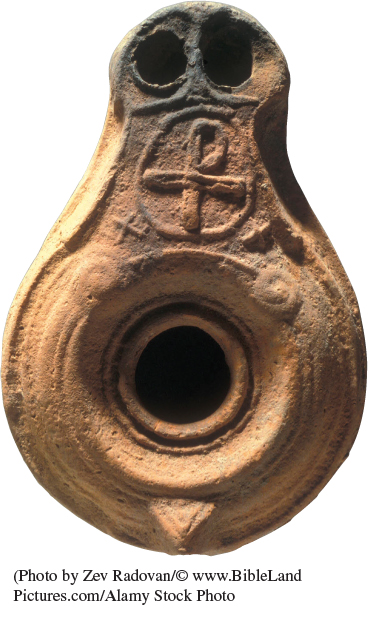A History of Western Society: Printed Page 179
A History of Western Society, Value Edition: Printed Page 167
A History of Western Society, Concise Edition: Printed Page 179
The Growing Acceptance and Evolution of Christianity

At first most Roman officials largely ignored the followers of Jesus, viewing them simply as one of the many splinter groups within Judaism. Slowly some Roman officials and leaders came to oppose Christian practices and beliefs. They considered Christians to be subversive dissidents because they stopped practicing traditional rituals venerating the hearth and home and they objected — often publicly or in writing — to the cult of the emperor. Some Romans thought that Christianity was one of the worst of the mystery religions, with immoral and indecent rituals. For instance, they thought that the ritual of the Lord’s Supper, at which Christians said that they ate and drank the body and blood of Jesus, was an act of cannibalism involving the ritual murder of Roman boys. Many in the Roman Empire also feared that the traditional gods would withdraw their favor from the Roman Empire because of the Christian insistence that these gods either did not exist or were evil spirits. The Christian refusal to worship Roman gods, in their opinion, endangered Roman lives and society. Others worried that Christians were trying to destroy the Roman family with their insistence on a new type of kinship, and they pointed to Jesus’s words in the Gospels saying that salvation was far more important than family relationships. A woman who converted, thought many Romans, might use her new faith to oppose her father’s choice of marital partner or even renounce marriage itself, an idea supported by the actions of a few female converts.
Persecutions of Christians, including torture and executions, were organized by governors of Roman provinces and sometimes by the emperor, beginning with Nero. Most persecutions were local and sporadic in nature, however, and some of the gory stories about the martyrs are later inventions, designed to strengthen believers with accounts of earlier heroes. Christians differed in their opinions about how to respond to persecution. Some sought out martyrdom, while others thought that doing so went against Christian teachings.
Responses to Christianity on the part of Roman emperors varied. The emperor Trajan forbade his governors to hunt down Christians. Though admitting that he considered Christianity an abomination, he decided it was better policy to leave Christians in peace. Later emperors, including Septimius Severus at the very end of the second century, Decius in the third century, and Diocletian in the fourth century, increased persecutions again, ordering Christians to sacrifice to the emperor and the Roman gods or risk death. Executions followed their edicts, although estimates of how many people were actually martyred in any of these persecutions vary widely.
By the second century C.E. Christianity was also changing. The belief that Jesus was soon coming again gradually waned, and as the number of converts increased, permanent institutions were established instead of simple house churches. These included buildings and a hierarchy of officials often modeled on those of the Roman Empire. Bishops, officials with jurisdiction over a certain area, became especially important. They began to assert that they had the right to determine the correct interpretation of Christian teachings and to choose their successors. Councils of bishops determined which writings would be considered canonical, and lines were increasingly drawn between what was considered correct teaching and what was considered incorrect, or heresy.
Christianity also began to attract more highly educated individuals, who developed complex theological interpretations of issues that were not clear in scripture. Often drawing on Greek philosophy and Roman legal traditions, they worked out understandings of such issues as how Jesus could be both divine and human, and how God could be both a father and a son (and later a spirit as well, a Christian doctrine known as the Trinity). Bishops and theologians often modified teachings that seemed upsetting to Romans, such as Jesus’s harsh words about wealth and family ties. Given all these changes, Christianity became more formal in the second century, with power more centralized.